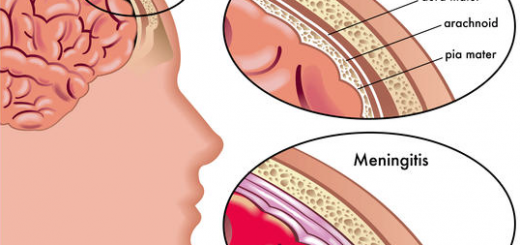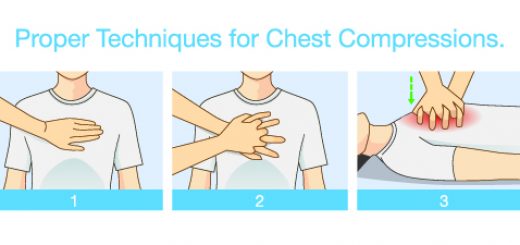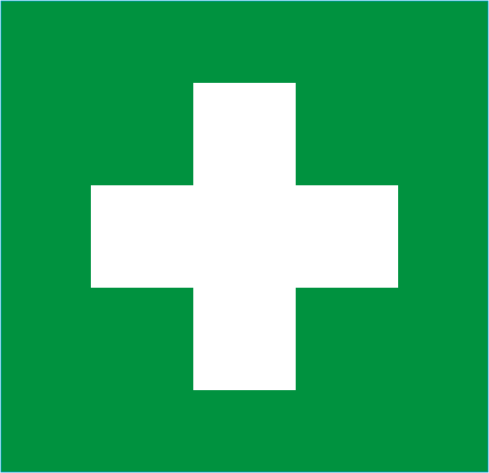First Aid for Hypotension: 10 Immediate Steps to Take!
Did you know that orthostatic hypotension – which is a type of hypotension – affects about 5% of the population at the age of 50, and that particular number goes up to over 30% in individuals over the age of 70?
Looking at this number, I believe it’s important to know all about hypotension and the first aid associated with it.
Hypotension refers to low blood pressure, and it signifies a situation when a person’s blood pressure is much lower than expected, which could happen due to a variety of reasons and conditions.
Blood is pumped around the body by the heart through the blood vessels, and blood pressure is the term for the amount of force exerted on a person’s artery walls by the pumping of blood.
A blood pressure reading appears in the form of two numbers, namely systolic pressure and diastolic pressure.
Systolic pressure, which is the top number, is the pressure in the arteries when the heart is beating. Diastolic pressure, which is the bottom number, is the pressure in the arteries when a person’s heart rests between beats.
A normal blood pressure reading is usually considered to be less than 120/80 mm Hg, and the reading for low blood pressure is usually less than 90/60 mm Hg.
Do you know how to treat hypotension? If not, then that’s what we will be discussing in this article.
We will also be diving into the symptoms and causes of hypotension, the different types of hypotension, the complications of the condition, and when to see your healthcare provider if you have hypotension.
Types of Hypotension
The following are some of the different types of low blood pressure:
- Orthostatic hypotension: Orthostatic hypotension is also known as postural hypotension, and this drop in blood pressure occurs when a person stands after sitting or lying down. This could happen due to dehydration, pregnancy, certain medicines and medical conditions, and being on bed rest for a prolonged period of time. Orthostatic hypotension is usually seen in older adults.
- Postprandial hypotension: Postprandial hypotension takes place about an hour or two after having a meal. This mostly affects older individuals, especially those who suffer from autonomic nervous system diseases such as Parkinson’s disease or high blood pressure. It occurs when a person’s nervous or cardiovascular system doesn’t react properly to sudden changes in position.
- Neurally mediated hypotension: Neurally mediated hypotension can occur when you stand for a long time. Children and young adults are the ones who are usually affected by this kind of hypotension. It occurs due to miscommunication between the heart and the brain.
- Multiple system atrophy with orthostatic hypotension: This is a rare disorder that affects the involuntary nervous system, which is responsible for controlling functions such as blood pressure, digestion, breathing, and heart rate.
What are the Symptoms of Hypotension?
Some of the symptoms of hypotension can be:
- Dizziness or lightheadedness
- Weakness
- Nausea
- Fainting
- Confusion
- Blurring or dimming of vision
- Lethargy or fatigue
- Pale, cold, or clammy skin
- Feeling agitated or having other changes in behavior
- Trouble concentrating
When your blood pressure drops extremely low, your body may not receive enough oxygen to carry out all the essential functions. This can lead to breathing issues, causing you to lose consciousness. Your body can also go into shock, the symptoms of which include: - Skin turning pale and cold
- Confusion
- Quick breathing
- Quick and weak pulse
Causes of Low Blood Pressure
There can be numerous causes of low blood pressure, and they are as follows:
- Central nervous system diseases or conditions, such as Parkinson’s disease, that affect the nervous system, which is responsible for controlling blood pressure. Anyone who suffers from such a condition can experience low blood pressure following a meal as their digestive systems utilize more blood once food is digested.
- Low blood volume, which can be caused due to dehydration or severe injuries.
- Lung and heart conditions can contribute to low blood pressure, as hypotension can be caused if a person’s lungs aren’t working properly or if the heart beats too slowly or too quickly. It can also occur due to advanced heart failure.
- Recreational drugs and alcohol can often cause a drop in blood pressure. Certain home remedies, vitamins, and herbal supplements can lower a person’s blood pressure as well.
- Extreme temperatures can negatively affect someone’s hypotension and worsen its effects.
- Pregnancy often leads to orthostatic hypotension during the first and second trimesters. There are certain pregnancy complications that lead to low blood pressure, such as bleeding.
- Some prescription medications can lower one’s blood pressure, many of which are related to treating heart failure, depression, neurological problems, and more. Therefore, always discuss with your healthcare provider before taking any medicines.
- Life-threatening conditions, such as pulmonary embolism (PE), collapsed lung, heart attacks, and irregular heart rhythms, can lead to hypotension.
Treatment for Hypotension
The treatment for hypotension depends on the cause behind it. Your doctor could either recommend making lifestyle changes or prescribe medications to you, and at times, it can also be a combination of the two.
There are certain first aid measures you can take to bring your hypotension under control, and those steps are:
- Stay hydrated and drink plenty of water so as to prevent dehydration, which can cause low blood pressure.
- When you’re getting up after being seated for a while, make sure to do it slowly.
- Make sure to have small and frequent meals. Sitting still or lying down following a meal is also often helpful.
- If standing for a long time causes you to have low blood pressure, then try moving around and flexing your leg muscles.
- Don’t stand or sit for prolonged periods.
- Follow a diet that is higher in salt.
- Limit your intake of alcohol.
- Exercise regularly so as to promote blood flow and avoid working out in humid and hot conditions.
- If your doctor has prescribed you medications related to your condition, then ensure to consume them as advised.
- Avoid situations where you may experience being exposed to hot water for a long time, such as spas and hot showers.
Complications of Hypotension
The complications that one can develop as a result of hypotension include:
- Falls: Low blood pressure leads to dizziness, which can cause a person to faint or fall. This can also lead to serious injuries.
- Shock: When the blood pressure is too low, it can cause your body to go into shock due to lack of sufficient blood supply.
- Heart problems or stroke: In order to make up for the low blood pressure, the heart could end up pumping too fast or too hard, which can lead to stroke or heart failure.
When to See Your Healthcare Provider
If you are aware that you have hypotension, you should reach out to your healthcare provider if the symptoms begin to disrupt your daily routine or everyday activities.
If you don’t have hypotension, you should contact a doctor if you experience episodes of fainting or dizziness. This is particularly vital as it could be linked to underlying medical conditions.
You should visit the emergency room if you:
- Experience chest pain.
- Faint or pass out.
- Fall due to lightheadedness and end up hitting your head or injuring yourself.
- Experience symptoms of shock, such as being sweaty, feeling cold, having a fast heart rate, or quick breathing.
FAQs
Is 110 over 60 low blood pressure?
No, 110/60 mmHg is not considered to be low blood pressure.
What is the quickest home remedy for low blood pressure?
One of the quickest home remedies for low blood pressure is to consume more salt.
What should you not eat when you have low blood pressure?
Some of the foods to avoid when you have low blood pressure are spinach, watermelon, sunflower seeds, onions, and celery.
What happens if blood pressure is low?
When a person’s blood pressure goes too low, the vital organs don’t receive a sufficient amount of nutrients and oxygen. This could lead to shock, which requires immediate medical attention.
What are the foods that help in increasing blood pressure?
The foods that help in increasing blood pressure include salty foods, beetroot, whole grains, and eggs.
Conclusion
Once a person understands the condition of hypotension and learns about its symptoms, it becomes slightly easier to manage low blood pressure. If you suffer from hypotension, knowing about your triggers helps you deal with them in a better manner.
In case low blood pressure causes a person to feel unwell, their doctor will either recommend medical treatment or lifestyle changes. Proper diagnosis and treatment can help you avoid the possible complications related to hypotension.
If you’re concerned about any symptoms or your blood pressure level, notify your doctor right away so that it can be treated appropriately and you can learn how to look after yourself.





